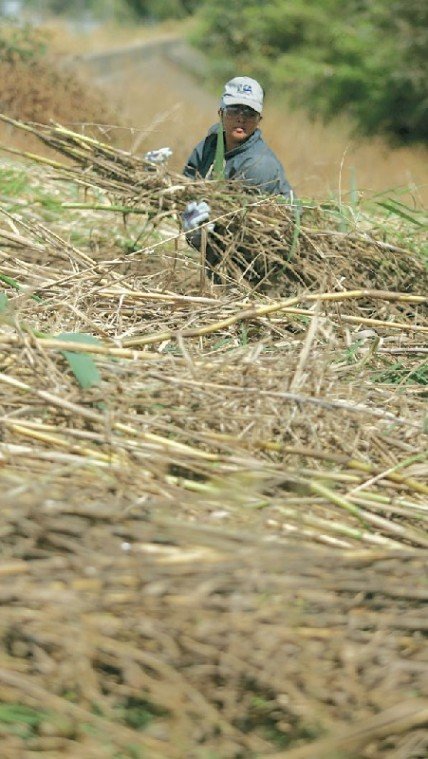San Martin
– The non-native Arundo donax, or giant reed, is choking
waterways throughout California and the United States, but the
Santa Clara Valley Water District is determined to remove as much
of the plant from country creeks as possible.
San Martin – The non-native Arundo donax, or giant reed, is choking waterways throughout California and the United States, but the Santa Clara Valley Water District is determined to remove as much of the plant from country creeks as possible.
In its second year, the vegetation-removal project hopes to remove five acres of the plant from Llagas Creek and complete follow-up on Uvas Creek reducing the risk of seasonal flooding.
“Because it is so invasive and fast growing it just overpowers all the other vegetation,” Rick Austin, vegetation program specialist said.
The plant obstructs the flow of water causing a choke point in the system. One big storm can overwhelm the creek very quickly and result in flooding. The reeds are also extremely flammable when dry, displace the native species and provide very minimal habitat values.
“It’s really a revolutionary project, but it has to be done in an old-fashion way,” said Mala Magill, watershed communications coordinator.
First biological surveys must be completed to determine the best time for removal. Crews work from July, when most birds are finished nesting, to the end of October, when the rainy season begins.
Then the plant must be cut and removed by hand to avoid disrupting the creek habitat. While crews are making progress, they have found car bodies, furniture and other trash in the creek which creates a safety hazard and slows down the project. Once this phase is completed, they will apply registered herbicides to the cut stems to reduce re-growth.
Crews will also remove any reeds which have returned to Uvas Creek since last year’s removal. Next year they will complete the same follow-up at Llagas.
“They have a river in southern California that has 10,000 acres of Arundo donax and there’s nothing else there. You don’t want to see the value of our creeks taken because of one plant,” Austin said.














